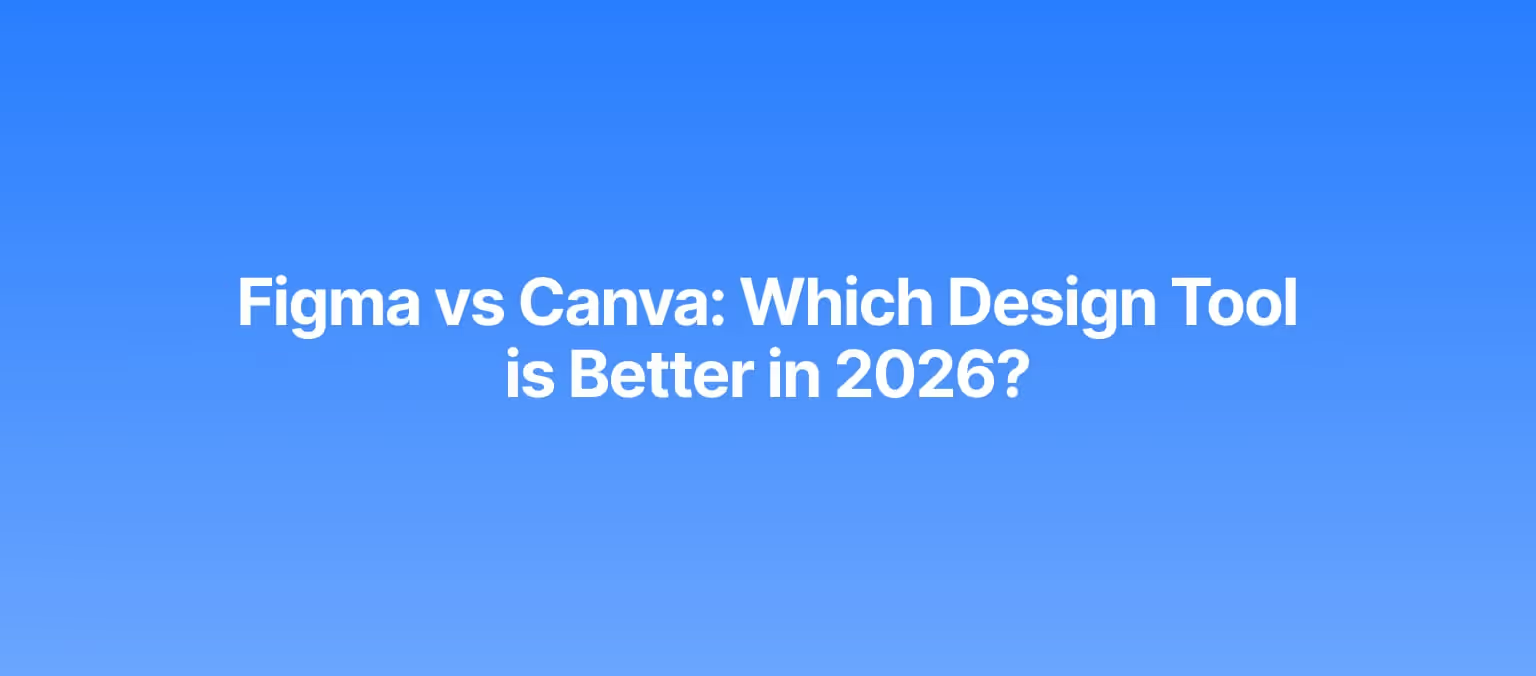ColdIQ’s $6M ARR Playbook: LinkedIn Lead Generation Secrets
If you’re struggling with LinkedIn lead generation, chances are you need to step up your game. LinkedIn isn’t a platform you visit once in a while with the hope of getting a prospect. It involves strategic moves and consistency — targeting and nurturing the right leads to convert them into paying customers.
As a business, you need more than just presence. You need practical LinkedIn prospecting tips to connect with the right buyers and turn conversations into revenue. In this article, we will explore how LinkedIn lead generation works for you, with practical steps from our top experts. Let’s get started.
What is LinkedIn B2B lead generation, and why does it matter?
LinkedIn lead generation involves using LinkedIn to find, engage, and convert potential customers who might be interested in your company's products or services. With over 1 billion users, it’s the world’s largest professional network, enabling your business to find the right leads.
While not every professional will be a lead, you can use the platform’s advanced filters to narrow down your list. In short, LinkedIn is the ideal platform for identifying and connecting with decision-makers, sharing valuable content to engage them, and fostering genuine professional conversations that convert them into qualified leads for your business.
Why then is LinkedIn a go-to platform for lead generation companies? Here are some benefits:
- You can access a targeted audience: LinkedIn offers powerful search filters that help you target specific decision-makers based on industries, job titles, company sizes, locations, and more. Whether you’re trying to connect with the CEO of a company or the Head of Sales, LinkedIn makes it easy to find exactly who you're looking for.
- For building professional relationships: When you reach out to potential leads on LinkedIn, you’re not only connecting with them. You’re engaging with people who are actively seeking business solutions, networking with industry peers, and keeping up with trends. That makes them much more likely to be open to your outreach.
- Better conversion rates: The leads you generate on LinkedIn are often higher quality because they come from professionals who are already in a business mindset. LinkedIn also helps foster relationships, which makes conversions more likely when the lead is ready to make a purchase.
Overall, LinkedIn lead generation is great for connecting with professionals across the globe. In the next section, we will explore how B2B lead generation works on LinkedIn.
How does B2B lead generation work on LinkedIn?
With over a billion users, LinkedIn is a global hub where millions of professionals connect, collaborate, and grow their careers. Out of these 1 billion users, 63 million individuals hold decision-making roles, making it the perfect space to connect with the people who grant access to key business opportunities.
Businesses seeking to expand their reach, target key decision-makers, and close more deals can achieve real success by leveraging LinkedIn strategically.
The LinkedIn B2B lead generation process begins with optimizing your profile, making it clear, credible, and tuned to attract the right audience. Next, businesses leverage LinkedIn’s powerful search filters to identify prospects based on specific criteria such as their job titles, industries, company sizes, and locations, focusing on those who really matter.
It is not limited to the quest for names alone; companies engage prospects with insightful posts, personalized messages, and strategic campaigns, nurturing leads into valuable business connections.
Key components of LinkedIn lead generation
B2B LinkedIn lead generation involves different processes: know who you’re looking for, reach out in a way that feels intentional, and stay present until trust is built. As a result, every successful LinkedIn lead generation strategy rests on three key components: targeting, designing outreach sequences, and follow-up.
1. Target ideal prospects
Not only is a well-defined audience the foundation of any effective LinkedIn marketing strategy, but so is a well-defined ideal customer profile (ICP). It serves as the foundation for targeted and efficient lead generation efforts.
But how do you define your ICP? First, analyze your existing customer base to find those who are the most valuable. Next, identify shared characteristics among your current customers.
Look for patterns like job titles, location, revenue, specific pain points, or other key details. Then, create an ideal customer template to guide your efforts.
Afterwards, refine your ICP to adapt to customer and industry changes. Once you have this figured out, use LinkedIn Sales Navigator to find these prospects and narrow down the results with its advanced search filters.
2. Design outreach sequences
Once you know who you want to reach, the next challenge is how. Now, you need to build a path that feels natural for the prospect to walk. That’s where sequencing comes in.
You do it badly; it feels robotic. You do it well, it feels like the start of a genuine business relationship. The order, timing, and medium must be on point. Here are three ways to reach out to your LinkedIn prospects:
- Start with a connection request. For instance, reference a post they recently created, their company update, or an industry trend.
- Send a short message to open the door without trying to close the deal too early.
- Use email as a part of the mix. It flows in naturally, building on the context already created rather than repeating the same pitch.
Here is an example of a LinkedIn template from Kenny Damian, GTM Engineer at ColdIQ.
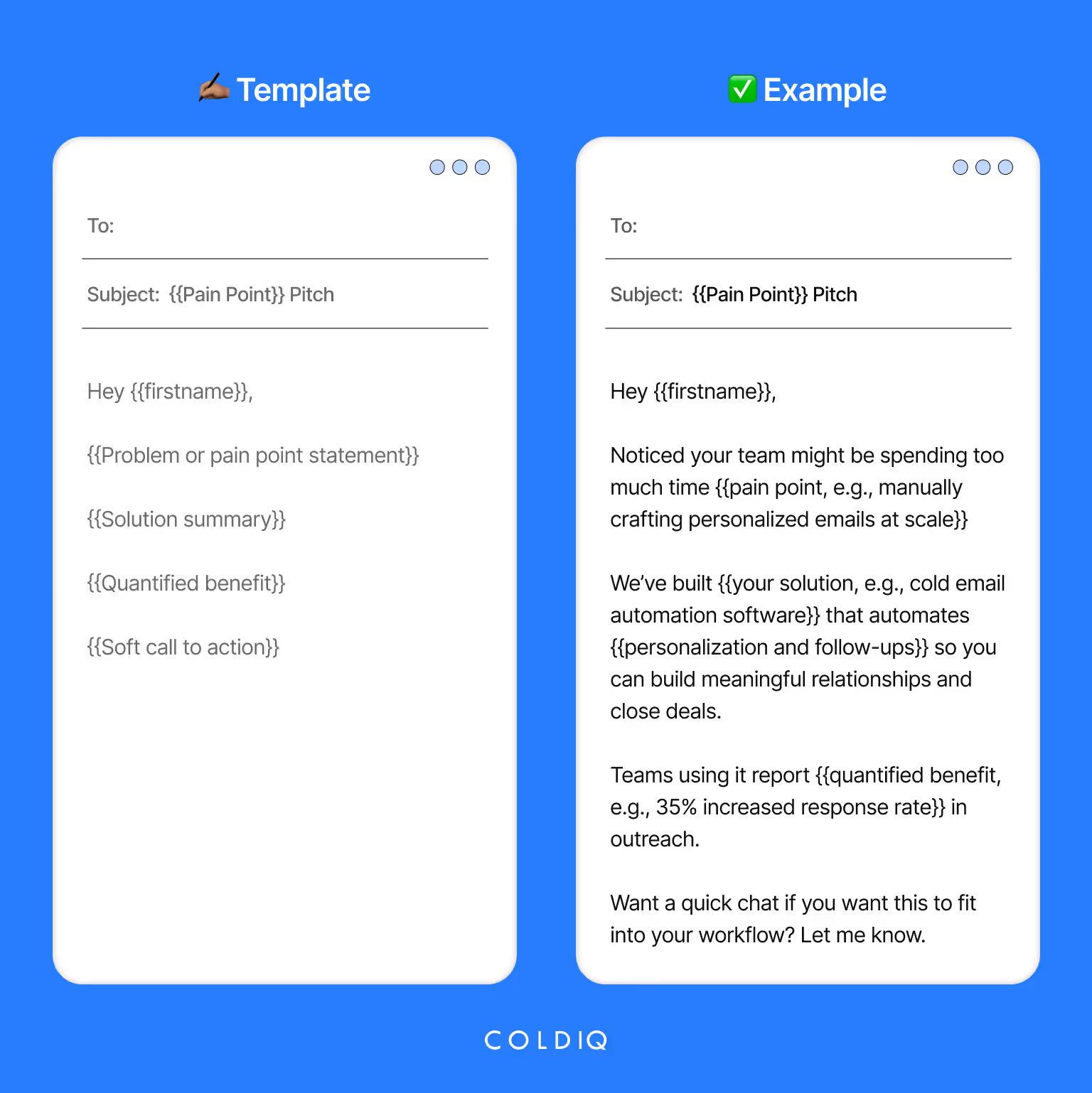
3. Follow-up on prospects
What separates a forgotten connection request from a real business conversation is follow-ups. Your first message is barely enough. In fact, most opportunities are unlocked not in the opening touch, but in the persistence that follows. A good follow-up doesn’t nag or pressure.
The timing matters just as much as the message. Do it too much, and you turn into noise. Do it too little, and you disappear. Striking this balance is easier with LinkedIn automation tools that let you schedule reminders, pace your follow-ups, and keep engagement natural.
How to create an effective LinkedIn lead generation strategy? The ColdIQ hack to $6M ARR)
Generating leads on LinkedIn seems like a hard chore, especially when you’re just starting. However, it’s not. With the right strategy, you can identify and target the right leads to grow your business.
In this section, Michel Lieben, CEO and Founder at ColdIQ, shares some insights on growing your business to $6m ARR.
TL; DR Watch the full video here
1. Study high-performing posts
When you study your high-performing posts, you understand what resonates most with your audience. Else, you could post for months on LinkedIn without getting the intended results.
Studying your high-performing posts lets you identify the most successful elements to replicate for your LinkedIn posts. For instance, it could be more engaging language, stories, or carousel posts to increase your reach and drive more engagement.
Michel Lieben, CEO and Founder at ColdIQ, recommends some tips for studying high-performing LinkedIn posts:
- What does the hook look like?
- What formats are they using? Text-only posts, carousels, or infographics?
- How long are the posts? Are they short or long?
- What’s their writing style? The tone or word choice?
The goal is to compile enough publications to establish a baseline of what you intend to achieve. Michel recommends two tools for studying high-performing posts.
Taplio
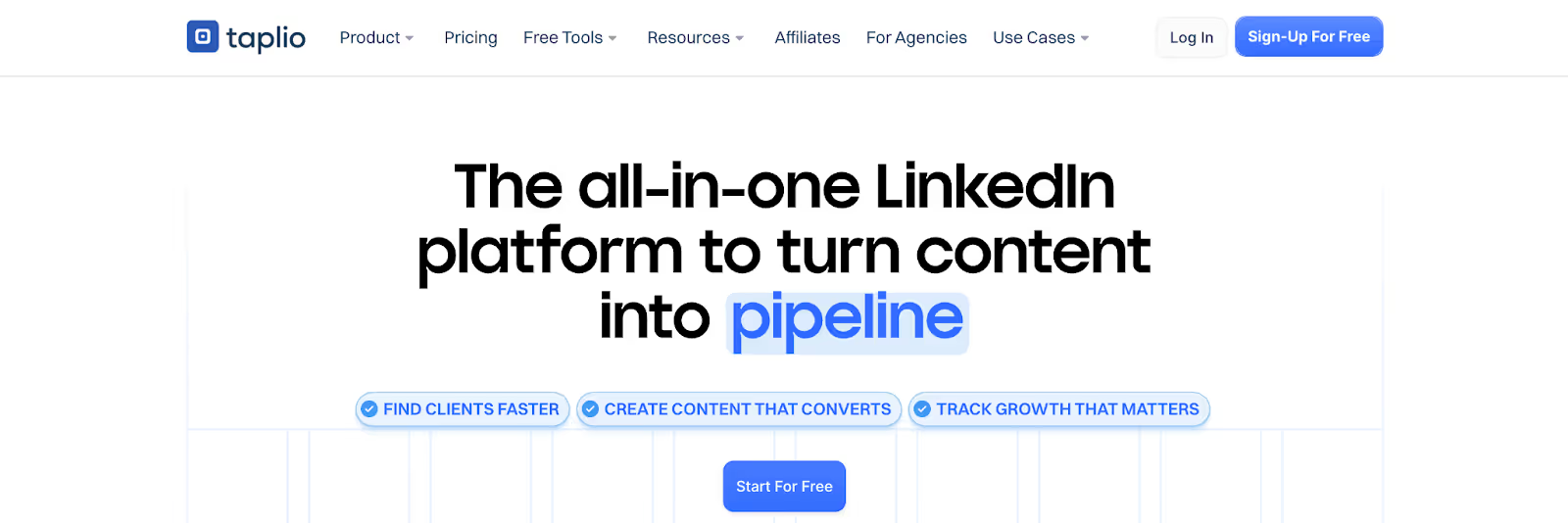
Use a specific keyword to find high-performing posts on Taplio. For instance, you can type “sales,” or “prospecting” into its search bar to display various creators’ viral posts related to the keyword.
Then, filter based on criteria like the likes (e.g., 300 likes), comments (e.g., 50 comments), or number of followers. Also, study the patterns that these pieces of content have in common to create your post. Note that this feature is only available to their paying customers.
Scripe

Scripe follows a similar route to Taplio. You can create content within seconds and get insight into your content’s performance. However, the key difference is that you can search for viral posts by a specific creator.
2. Leverage visual assets
A picture speaks a thousand words, and our brains process images 60,000 times faster than text. This applies to LinkedIn. Posts with great visuals on LinkedIn get more engagement than posts without one.
In a busy feed, visuals let your audience stop scrolling for a minute. They capture your audience’s attention faster and make your posts more memorable. Whether it’s images, infographics, or videos, investing in good designs attracts more engagement to your posts. The good news is you can reuse them for future purposes.
3. Repurpose best-performing content
You own your best-performing content; repurpose it. As long as it’s original content, you can reuse it as many times as you want. However, take note of the timeframe to avoid publishing similar posts at almost the same time.
Besides, consider rewriting the post to make it better. You’ll find out they will perform better than they did the first time. Daniel Iles, CEO at Viral Coach, offers an approach for this:
- Month 1 → Create 20 publications and find3 or 4 of them that performed great
- Month 2→ Create another 20 publications and find another 4-5 that performed great.
- Month 3 → Create 16 publications and reuse the 4 posts that performed well in month one.
- Month 4 → Create 15 publications and reuse 5 posts that performed well.
- Month 5 → Create 12 publications and reuse 8 posts from months 1 and 2.
The crux of this is that you’d get a lot of posts that keep you consistent in your LinkedIn game.
4. Remain consistent
Growth doesn’t happen overnight. You can’t know what a successful post looks like with just a few posts. However, with a hundred published posts, you will see the difference.
Michel Lieben says, Audience building is a long-term game. You probably won’t make sense of the platform in the first few weeks or even months. But what separates the successful ones from others is consistency. They don’t give up until they see results.
LinkedIn is a long-term game, not a get-rich-quick one. If you want to see results, you must take pride in your consistency and see it as a trust-building mechanism.
Michel also shares his story about how consistency worked for him. He says, I had tried three times to remain consistent at LinkedIn posting. The first time, I gave up after three or four publications because I found it too cringeworthy. I was working in a marketing company at that time and cared about others’ opinions.
He further adds, By the second time, I realized it was dumb not to go for an opportunity because of what people would think. I started posting again about eight times or so. Then, I lost inspiration and found excuses for when I’d post again. It took months.
It took the third attempt for Michel to have the breakthrough. He says, By the third attempt, I stayed consistent. I noticed that if I were going to fail, it would be because I failed to remain consistent. I had gone full-time on my business prior, so I committed to publishing five times per week for three months straight.
When he had published 30 times without generating a single lead, he felt like giving up, especially on a national holiday. But somehow he gathered the courage to post.
He says, I published 30 times without generating a single lead from the platform. On the 31st day of posting, I was about to give up, as it was a national holiday. I had a massive headache and was about to convince myself that it didn’t count as a normal working day. But somehow, I managed to gather the courage to post about AI in sales and went to bed.
When I woke up the next morning, the post had gone viral — 600+ likes, 140k impressions, 25 meetings booked, and 4 new signed clients.
That’s the power of consistency. It doesn’t always mean showing up when you’re energized. It means showing up even when you’re about to give up.
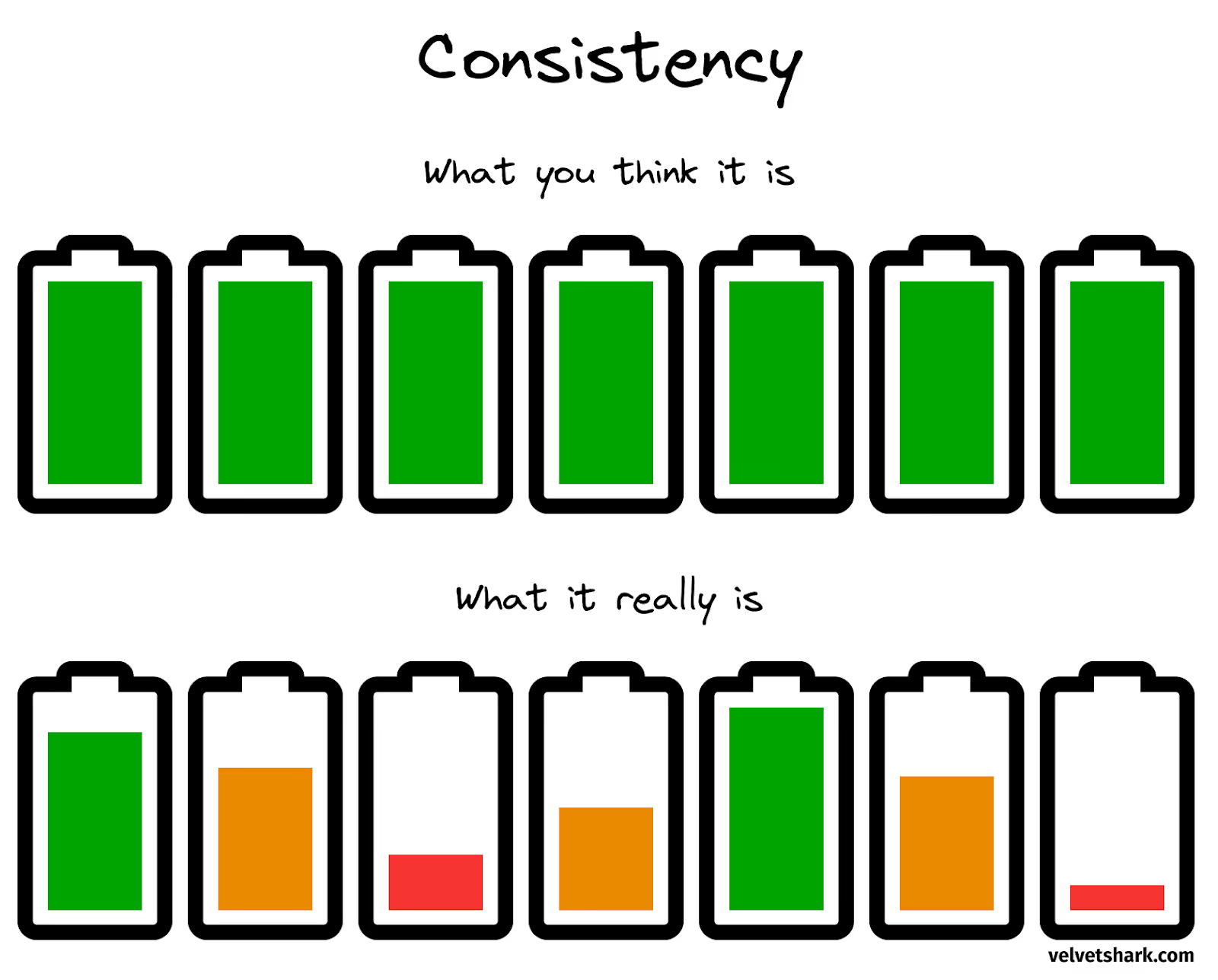
5. Plan posts ahead of time
Now that you know why you should stay consistent, how exactly do you do it? Here’s a hack — plan your posts ahead of time. When you plan your post ahead of time, you save time, ensure a consistent stream, and avoid last-minute scrambling. Michel Lieben advises, “Find some big ideas you can write about week after week. Plan a few ideas in advance to save you a lot of time in content production.”
For instance, share your company milestone this week, find an educational topic next week, or talk about your experience the week after. The key is to recreate posts on these topics as many times as you want.
6. Write in-depth content
By saving time to plan posts, you can create thoughtful, high-quality content that engages your readers. The kind that builds trust with your audience and establishes you as an authority in your field.
Michel Lieben, CEO and Founder at ColdIQ, advises that you shouldn’t be afraid of hitting LinkedIn’s character limit.
Unlike funny memes or selfie posts that get fewer likes, in-depth content leaves readers to spend more time digesting your work, ultimately encouraging a higher level of engagement. As a result, you get to sign your ideal kind of clients.
7. Connect with ideal buyers
Even though your ideal buyers are on LinkedIn, there is a need to find them. Use LinkedIn’s advanced filters to sort your broad list. Categorize by different criteria such as industry, role, or company size.
Once you’ve narrowed down your list, send connection requests or a DM to every prospect that matches your ICP. Lemlist is a great tool to set this up. With its multichannel outreach feature, you can set up an automated workflow where you visit profiles, send connection requests, and LinkedIn messages without switching tabs.
However, before you go full mode with this approach, makes sure you send genuine, personalized messages that resonates with your prospects.

If they accept your requests, that will increase the likelihood of seeing your posts. Imagine the impact of 100 ideal clients regularly reading how you can solve their problems. That wouldn’t only engage them but also increase the chance of converting them.
8. Leverage comments to engage
When you comment on other people’s posts, your name and profile appear in the feeds of the author and their connections. This improves your reach even beyond your immediate network.
Besides, commenting on posts signals to the LinkedIn algorithm that you’re an active user, increasing the visibility of your content. It also favors your feed by providing relevant content based on your preferences rather than irrelevant posts.
Here’s a great hack for commenting on other people’s posts:
- Find relevant people in your industry.
- Go to the search bar and click posts >> sort by latest posts.
- Click “find members” and input the names of the relevant authors from whose posts you wish to comment.
- Once you’ve added the names, click the search bar, and it will display these authors’ recent posts so you can comment on them.
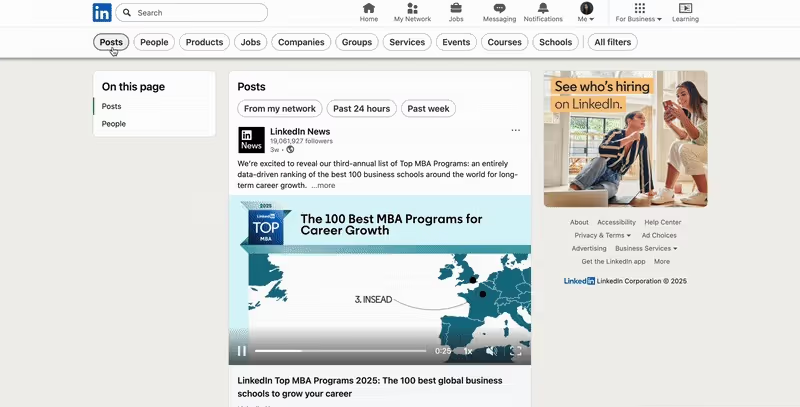
9. Reply to comments under your posts
Reply to every comment under your post for at least 30 minutes. This lets the algorithm determine whether to show your post to more people or not.
When you reply to comments, the conversation widens, exposing your content and profile to a wider audience. Whether you like it or not, LinkedIn’s algorithm favors posts with comments, as it recognizes them as a sign of relevance and engagement.
10. Leverage technology
Use technology to automate the manual LinkedIn process. Whether you’re searching for ideal clients, sending connection requests or messages, or publishing posts en masse, LinkedIn automation tools can automate these processes at scale, enabling you to expand your reach. Some of these common LinkedIn tools include:
- Taplio & Scribe—analyze LinkedIn post performance and find replicable patterns.
- Grammarly—polish writing for clarity and professionalism.
- Opus Clip—reduces long videos into LinkedIn-friendly clips.
- EZGif—create eye-catching GIFs to boost post engagement.
- ChatGPT / Claude—generate ideas, draft copy, and refine content at scale.
- Canva—design carousels, infographics, and branded visuals.
- Notion—plan, schedule, and manage the full content workflow in one place.
Once you have this in place, onboard your team in the process. This enables you to scale wide, engaging a massive audience that could convert into paying customers.
What drives LinkedIn lead generation cost?
The LinkedIn lead generation cost relies on the tools you use, the experts you hire, a premium subscription, and other factors that shape your budget. Let’s break it down.
Tools
The backbone of LinkedIn prospecting is tech. Tools like LinkedIn Sales Navigator, Lemlist, Expandi, Valley, and HeyReach help you identify, connect, and follow up with leads at scale. By the way, their subscription costs vary. For context, here is an overview of how this tool charges for LinkedIn prospecting:
- LinkedIn Sales Navigator → Starts at $99 per month
- Expandi → Charges $99 per month
- Heyreach → Costs $79 per month
- Lemlist → Starts at $69 per month
- Valley → Starts at $395 per month
The more advanced the features — smart personalization, analytics dashboards, or email integration — the higher the price tag. Notwithstanding, scaling outreach is almost impossible without them.
Agency fees
Hiring a LinkedIn lead generation agency comes with a deal of specialized expertise, which can involve a flat monthly retainer or performance-based fees. These costs cover strategy, copywriting, LinkedIn lead generation campaign management, and reporting.
While pricier than a DIY approach, agencies save businesses from trial-and-error campaigns and bring tested systems to the table. This justifies the amount when they deliver predictable, qualified leads faster.
Manpower
If you go in-house, manpower becomes another major cost driver. You’ll need dedicated SDRs or marketers to run searches, send invites, monitor inboxes, and nurture leads.
Factor in salaries, training, and time. Even if tools are in place, the human element can’t be skipped. Relationships on LinkedIn still require real conversations and judgment.
Comparing in-house vs agency-managed campaigns
Which is more effective? Generate LinkedIn leads via your dedicated team or by outsourcing to an agency. This section explores this with this in the table below.
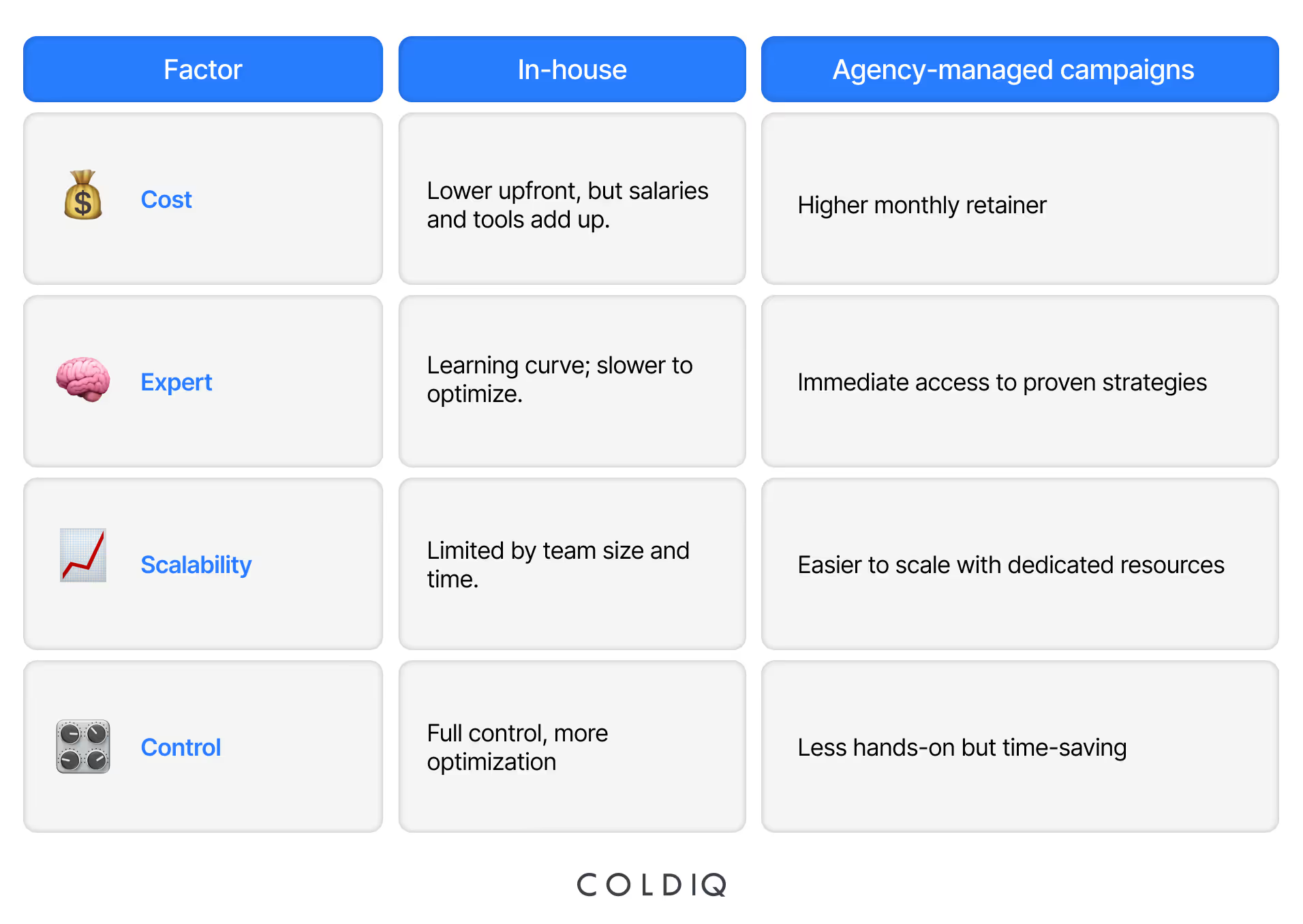
Why investing in quality copy, targeting, and automation pays off
Investing in LinkedIn lead generation can feel pricey at first glance, but think of it this way:
- Quality targeting ensures you’re speaking to decision-makers, not dead-end contacts,
- Persuasive copy opens conversations that lead to booked calls instead of ignored invites,
- And automation ensures consistent engagement without burning out your team.
In short, every penny spent on doing it right compounds into higher-quality leads, faster pipeline movement, and ultimately, more closed deals. Cut corners here, and you’ll spend more chasing the wrong prospects. Build the system right, and LinkedIn becomes one of your highest-ROI channels.
What’s ColdIQ’s outbound system blueprint?
Building and growing your outbound system can be quite challenging. With too many strategies and tools to choose from, making decisions that promote growth may not be as easy as you think. That’s why we advise handing the heavy lifting part to ColdIQ.
We develop and run your outbound system so you can focus on building relationships and closing deals instead of juggling processes.
- Audience targeting: We perform research on your potential customers to find the right ones that match your ICP. We leverage LinkedIn buying signals to narrow down your list, increasing the likelihood of finding prospects who are interested in your business’s offerings.
- Email setup: We set up and manage your email infrastructure — multiple email accounts, warmed domains, or mailbox rotation — to land cold emails in your prospect’s inbox, not the spam folder.
- Copywriting: We craft highly personalized and relevant messages that address your prospect’s needs, increasing the chances of getting a response.
- Campaign optimization: We refine and iterate strategies to deliver a scalable, sustainable outbound system that floods your pipeline with qualified opportunities.
If your team struggles with building an outbound system that combines automation with human touch, ColdIQ offers a proven framework for generating steady, high-quality leads to drive predictable revenue growth. We don’t just say this, the results we generate backs it up.
When AirOps partnered with ColdIQ, their outbound engine staggered. Inbound leads were steady but outbound wasn’t enough. With an in-depth analysis of their ICP, messaging that resonates, and a multichannel strategy to reach prospects on their preferred platform, their outbound engine transformed with over 50+ positive replies from cold email campaigns and $3m generated within 3 months.
How to measure and optimize your LinkedIn lead generation results
Trying to navigate your LinkedIn lead gen is not just about sending messages and hoping for the best. You have to keep track of what is working and tweak it to suit your needs. Let's examine how to measure your success and make it better, step by step.
Tracking key success metrics on LinkedIn
You can’t know whether you’re making progress if you don’t measure performance. To determine whether LinkedIn is a powerful tool for B2B lead generation, below are the key metrics to monitor:
- Impressions: Impressions are the number of times people saw your post. In the case of ads, it’s the number of times LinkedIn showed your ads to people. Since the algorithm serves posts or ads based on success metrics, this is an easy way to monitor what you are A/B-testing.
- Engagement rate: This is the percentage of prospects who liked, commented, saved, or shared your posts. A higher engagement rate shows they value your content, increasing their chances of becoming a future customer.
- Response rate: This measures the percentage of prospects who reply to your connection requests or outreach messages. A high response rate signals that your targeting and messaging resonate well with your intended audience.
- Meetings booked: The number of contacts who agree to schedule a call or meeting is a direct indicator of lead quality and interest. It reflects how well your outreach is converting conversations into meaningful sales opportunities.
- Conversion rate: The conversion rate is the percentage of users who become paying customers after seeing your posts or clicking an ad.
In short, you can’t determine progress if you don’t measure performance. Tracking key LinkedIn lead generation metrics gives you visibility into what’s working or not.
Tools for monitoring campaign performance
If you want to monitor campaign performance, here are some tools to use.
1. LinkedIn Analytics
LinkedIn Analytics tracks views, engagements, and follower growth on your posts and profile. It also breaks down audience demographics. This helps you see how your content drives clicks or shares, and view those responding to your lead generation efforts.
2. HubSpot
HubSpot integrates with LinkedIn to monitor email opens, click-throughs from shared links, and overall campaign ROI. HubSpot provides a dashboard to visualize lead progression from connection to conversion. This makes it easy for you to spot weak points in your funnel.
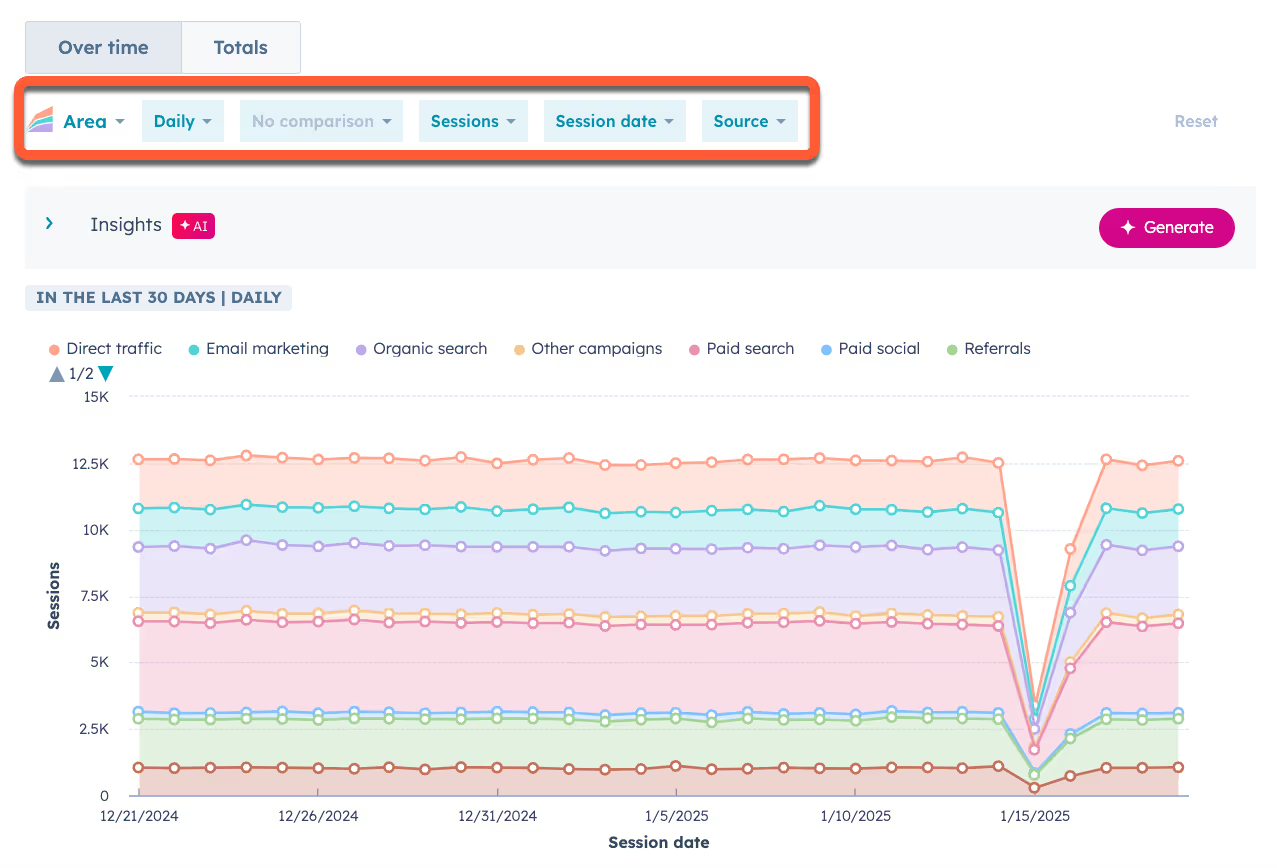
3. Hootsuite
Hootsuite is great for scheduling and analyzing posts across social platforms, including LinkedIn. It monitors performance with reports on reach, impressions, and engagement rates. This monitoring lets you compare campaigns side by side and adjust based on real-time data.
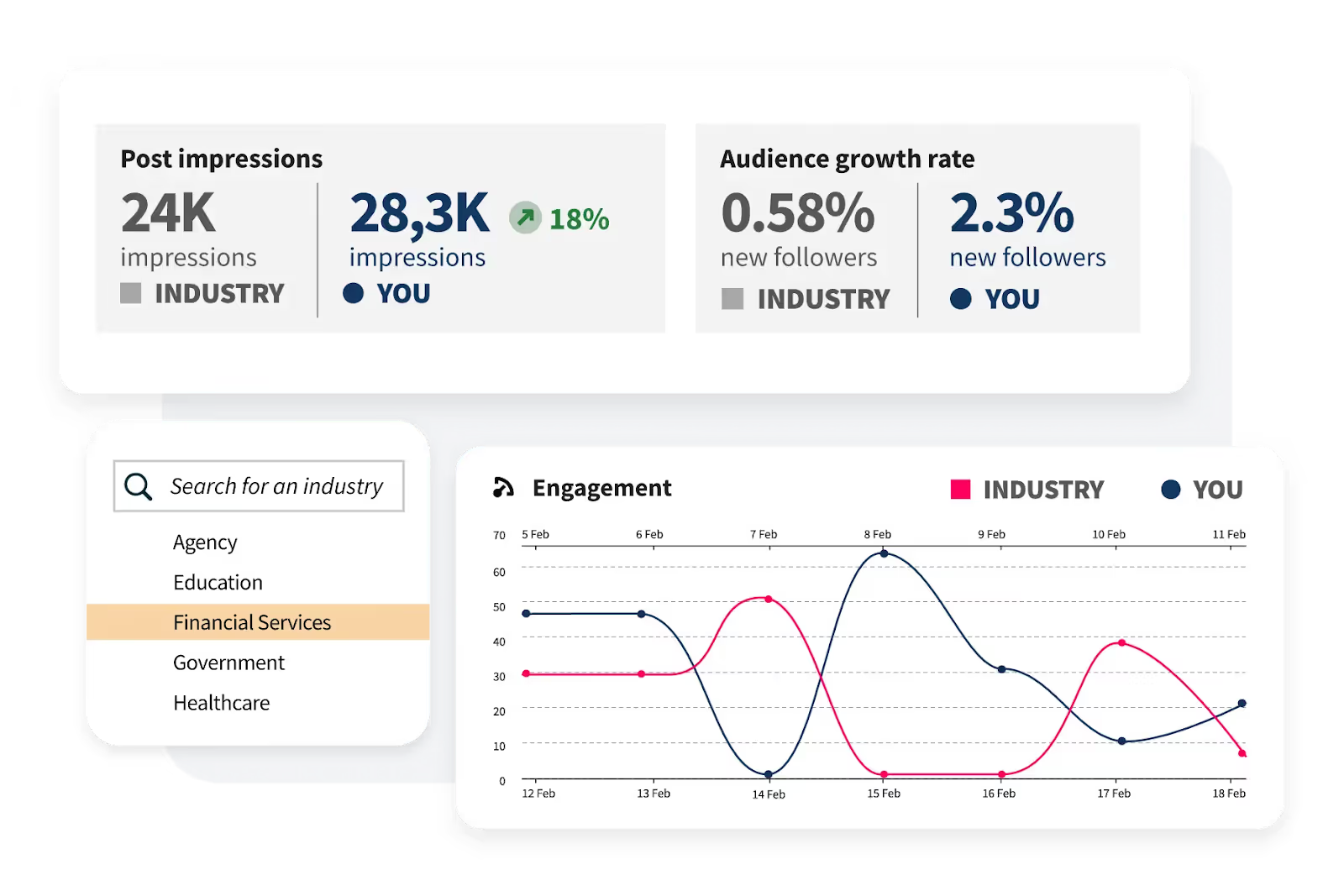
4. AuthoredUp
AuthoredUp offers a comprehensive dashboard of your LinkedIn’s performance. You can track the average impression, engagement, or reaction your post receives. You can also get insights into how people perceive your brand. Plus, the platform pinpoints what resonates most with your audience, so you can create more of them.
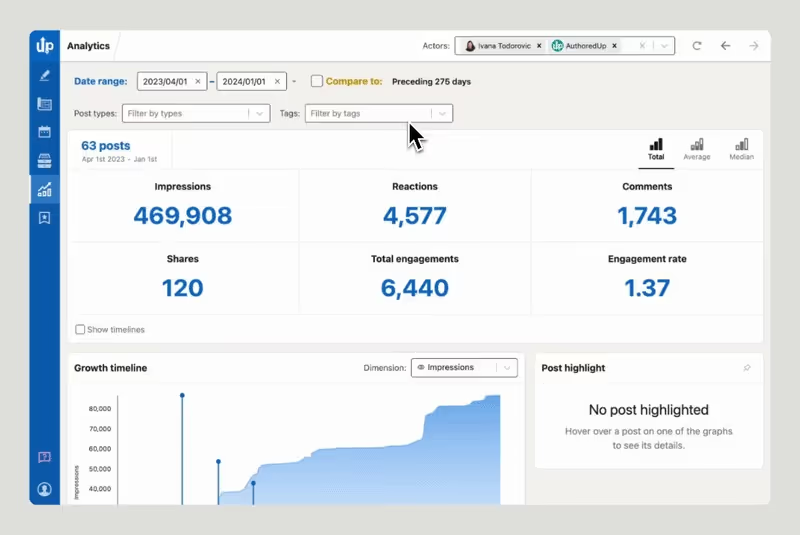
Testing messaging, timing, and targeting tweaks
Your LinkedIn lead generation isn’t a one-time activity. Continuously refine and optimize your process to achieve your desired results. A great way you can achieve this is through A/B testing your messages.
How can you do this? Send different versions of messages to see which gets more replies. Start by creating two different versions of your message, changing just one or two key elements.
Check elements such as the opening line, the length, the call-to-action (CTA), or whether you include social proof such as case studies. This careful approach of testing small, defined changes helps avoid guesswork and leads to continuous improvement.
Also, play around with your posting times. Do not make it a rigid situation. The best time to send LinkedIn messages is during a common break time from work – when professionals are scrolling on LinkedIn. Post times can be:
- Mid-morning (from 10 to 11 am),
- Lunch time (12 to 2 pm),
- Late afternoon (from 4 to 5 pm).
Always consider the user's local time zone before sending any messages, and mastering the art of timing will increase your acceptance rates. For targeting, tweak your audience filters with Sales Navigator.
It helps you to experiment with specific versus general audience groups. During optimization, keep iterations small, make sure testing is continuous in a controlled increment, and scale what wins.
What are the common LinkedIn lead generation mistakes to avoid?
Even as the coolest creator, there are times you flop. However, avoiding some pitfalls can save your lead gen from crashing. Let's dive into common LinkedIn lead generation mistakes that can frustrate your efforts.
Generic, spammy outreach
Nothing turns people off faster than a copy-paste message that screams insincerity. Spammy outreach feels like generic templates without any personal touch.
Before you make that outreach, take a second to reference something specific from their posts or experience. It will boost replies and build real connections. Choose quality over quantity to keep your account safe and your leads warm.
Poor targeting or unclear ICP
If you are good at sending messages to just anyone, you are likely wasting your time. An unclear Ideal Customer Profile (ICP) means you are chasing leads who are not necessarily interested. As a result, you get low-quality leads that turn into low conversions.
Narrow down your ICP by defining traits like job title, industry, and pain points. This makes your outreach count and turns random connections into opportunities.
Ignoring follow-ups and inbox management
How often do you access your inbox? Ignoring messages for a long period of time kills momentum. If you send a connection request and never follow up, or let messages pile up unanswered, leads will grow cold.
Ensure you set reminders for timely follow-ups. Good inbox management keeps conversations flowing, nurtures relationships, and shows reliability. In the long run, conversations turn into booked meetings.
Lack of personalization and value proposition
Without personalization or a clear value proposition, your message just blends into the noise. To avoid this, tailor your pitch to suit the people you are addressing. This adds value upfront, grabs attention, and positions you as helpful to the person being addressed.
Why LinkedIn lead generation is a must for B2B sales growth?
LinkedIn lead generation is more than just posting and hoping for a client to land on your doorstep. You need to be consistently active, targeting your ideal clients and nurturing them with the right messages that solve their problems.
If this sounds like a hassle for you, ColdIQ can run the process for you. With our sales experts, we leverage LinkedIn and other effective channels to generate high-quality leads to drive revenue growth for your business. Book a GTM strategy call with us today!


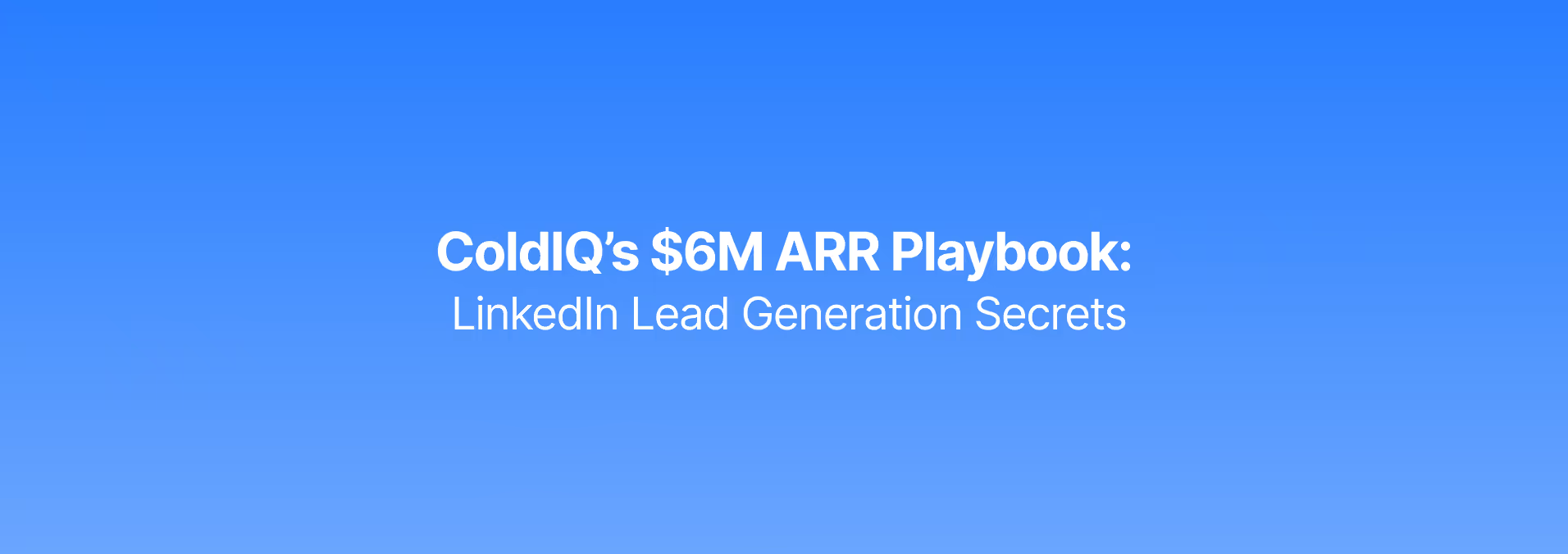

.avif)
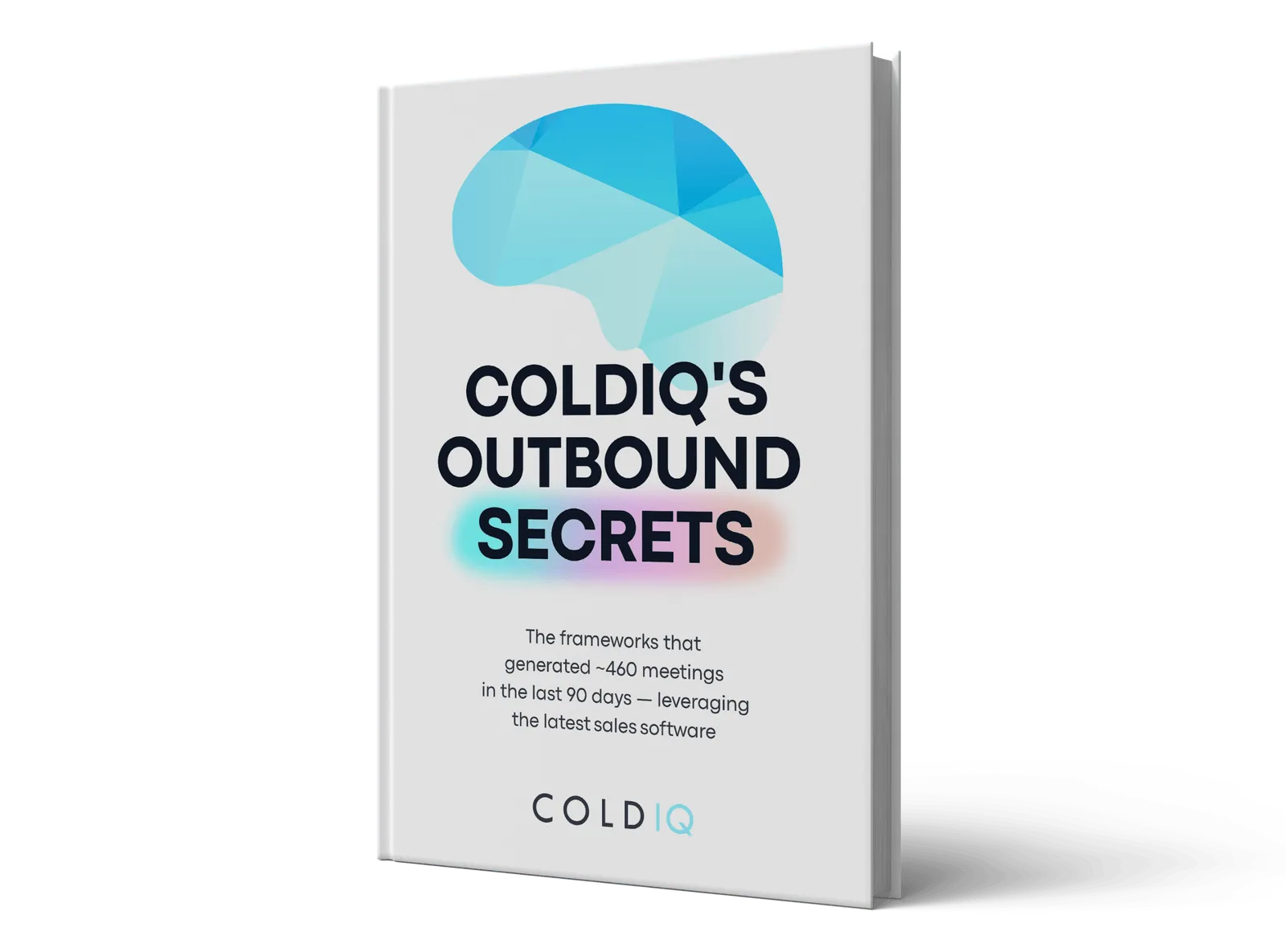
.svg)
.avif)
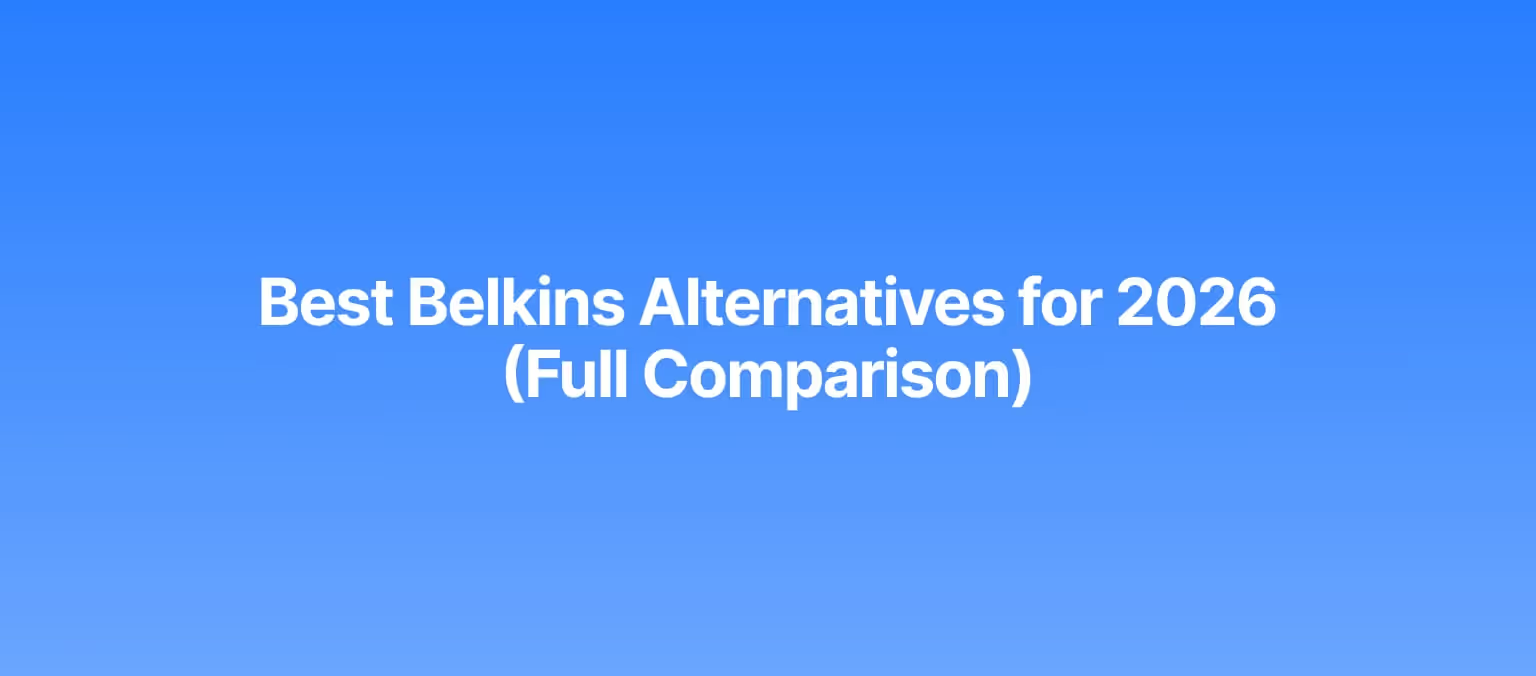
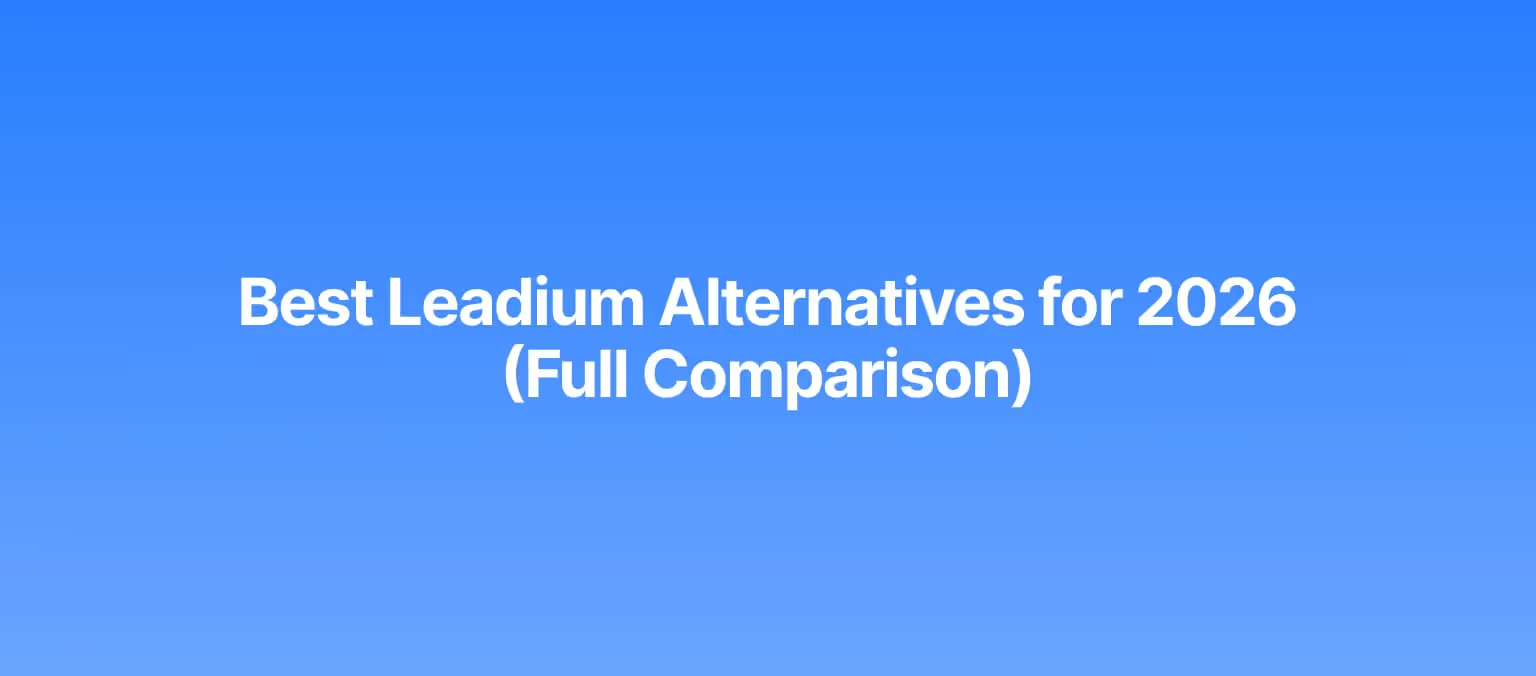

.avif)
